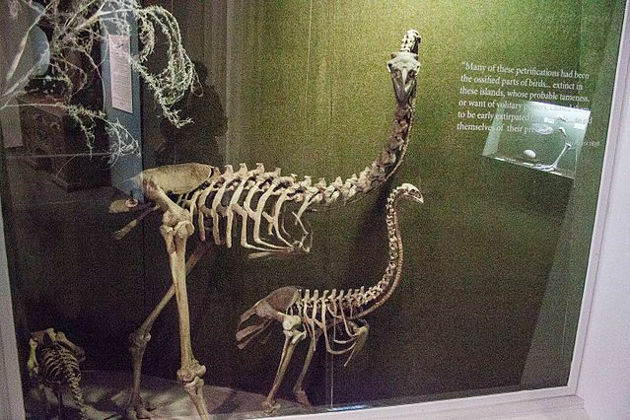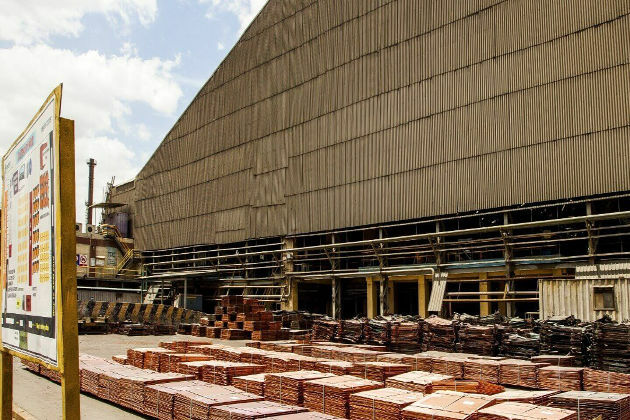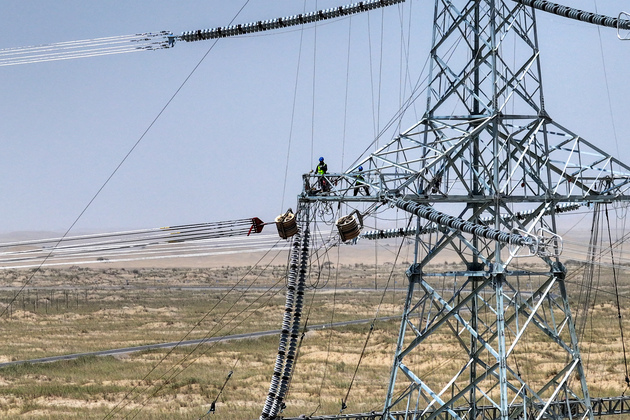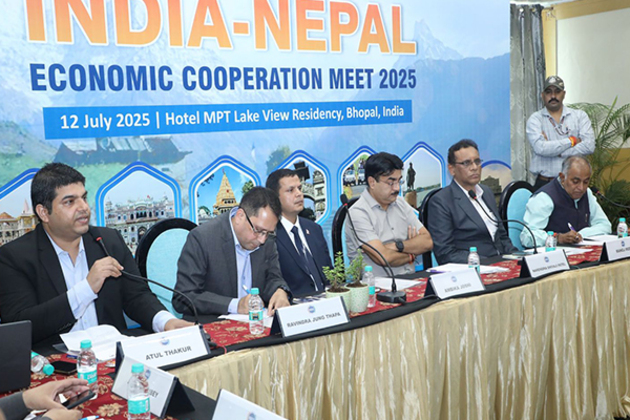Scientists develop artificial photosynthesis to help make food production more energy-efficient
ANI
24 Jun 2022, 00:25 GMT+10

Washington [US], June 23 (ANI): Researchers found a way to bypass the need for biological photosynthesis altogether and create food independent of sunlight by using artificial photosynthesis.
The study was published in the journal, "Nature Food."Researchers used a two-step electrocatalytic process to convert carbon dioxide, electricity, and water into acetate, the form of the main component of vinegar. Food-producing organisms then consume acetate in the dark to grow.
Combined with solar panels to generate the electricity to power the electrocatalysis, this hybrid organic-inorganic system could increase the conversion efficiency of sunlight into food, up to 18 times more efficient for some foods.
"With our approach, we sought to identify a new way of producing food that could break through the limits normally imposed by biological photosynthesis," said corresponding author Robert Jinkerson, a UC Riverside assistant professor of chemical and environmental engineering.
In order to integrate all the components of the system together, the output of the electrolyzer was optimized to support the growth of food-producing organisms. Electrolyzers are devices that use electricity to convert raw materials like carbon dioxide into useful molecules and products. The amount of acetate produced was increased while the amount of salt used was decreased, resulting in the highest levels of acetate ever produced in an electrolyzer to date.
"Using a state-of-the-art two-step tandem CO2 electrolysis setup developed in our laboratory, we were able to achieve a high selectivity towards acetate that cannot be accessed through conventional CO2 electrolysis routes," said corresponding author Feng Jiao at the University of Delaware.
Experiments showed that a wide range of food-producing organisms can be grown in the dark directly on the acetate-rich electrolyzer output, including green algae, yeast, and fungal mycelium that produce mushrooms. Producing algae with this technology is approximately fourfold more energy-efficient than growing it photosynthetically. Yeast production is about 18-fold more energy-efficient than how it is typically cultivated using sugar extracted from corn.
"We were able to grow food-producing organisms without any contributions from biological photosynthesis. Typically, these organisms are cultivated on sugars derived from plants or inputs derived from petroleum--which is a product of biological photosynthesis that took place millions of years ago. This technology is a more efficient method of turning solar energy into food, as compared to food production that relies on biological photosynthesis," said Elizabeth Hann, a doctoral candidate in the Jinkerson Lab and co-lead author of the study.
The potential for employing this technology to grow crop plants was also investigated. Cowpea, tomato, tobacco, rice, canola, and green pea were all able to utilize carbon from acetate when cultivated in the dark.
"We found that a wide range of crops could take the acetate we provided and build it into the major molecular building blocks an organism needs to grow and thrive. With some breeding and engineering that we are currently working on we might be able to grow crops with acetate as an extra energy source to boost crop yields," said Marcus Harland-Dunaway, a doctoral candidate in the Jinkerson Lab and co-lead author of the study.
By liberating agriculture from complete dependence on the sun, artificial photosynthesis opens the door to countless possibilities for growing food under the increasingly difficult conditions imposed by anthropogenic climate change. Drought, floods, and reduced land availability would be less of a threat to global food security if crops for humans and animals grew in less resource-intensive, controlled environments. Crops could also be grown in cities and other areas currently unsuitable for agriculture, and even provide food for future space explorers.
"Using artificial photosynthesis approaches to produce food could be a paradigm shift for how we feed people. By increasing the efficiency of food production, less land is needed, lessening the impact agriculture has on the environment. And for agriculture in non-traditional environments, like outer space, the increased energy efficiency could help feed more crew members with fewer inputs," said Jinkerson.
This approach to food production was submitted to NASA's Deep Space Food Challenge where it was a Phase I winner. The Deep Space Food Challenge is an international competition where prizes are awarded to teams to create novel and game-changing food technologies that require minimal inputs and maximize safe, nutritious, and palatable food outputs for long-duration space missions.
"Imagine someday giant vessels growing tomato plants in the dark and on Mars--how much easier would that be for future Martians?" said co-author Martha Orozco-Cardenas, director of the UC Riverside Plant Transformation Research Center. (ANI) Share
Share
 Tweet
Tweet
 Share
Share
 Flip
Flip
 Email
Email
Watch latest videos
Subscribe and Follow
Get a daily dose of Professional Autos news through our daily email, its complimentary and keeps you fully up to date with world and business news as well.
News RELEASES
Publish news of your business, community or sports group, personnel appointments, major event and more by submitting a news release to Professional Autos.
More InformationBusiness
SectionFilmmaker joins biotech effort to bring back extinct giant bird
WASHINGTON, D.C.: Filmmaker Peter Jackson's lifelong fascination with the extinct giant New Zealand flightless bird called the moa...
India seeks WTO nod for retaliatory tariffs on US
NEW DELHI, India: India has submitted a revised proposal to the World Trade Organization (WTO) in Geneva to implement retaliatory tariffs...
AI boom propels Nvidia to historic market cap milestone
SAN FRANCISCO, California: Nvidia, the Silicon Valley chipmaker at the heart of the artificial intelligence boom, this week briefly...
AI saves $500 million for Microsoft as layoffs reshape strategy
REDMOND, Washington: Artificial intelligence is transforming Microsoft's bottom line. The company saved over US$500 million last year...
FTC’s rule to ease subscription cancellations struck down by court
WASHINGTON, D.C.: A federal rule designed to make it easier for Americans to cancel subscriptions has been blocked by a U.S. appeals...
Musk’s X loses CEO Linda Yaccarino amid AI backlash, ad woes
BASTROP, Texas: In a surprising turn at Elon Musk's X platform, CEO Linda Yaccarino announced she is stepping down, just months after...
Engineering
SectionChina's marine economy rides tide of innovation into greener seas
BEIJING, July 13 (Xinhua) -- With strong tides of innovation and a deepening drive for sustainability, China's marine economy is surging...
PhotoFlash | China completes "power expressway loop" around southern Xinjiang desert
(250713) -- MINFENG COUNTY, July 13, 2025 (Xinhua) -- Staff members work on the final section of the 750-kilovolt (kV) loop in Minfeng...
J-K: Work on Megha-Budhal-Mahore-Gool road in full swing, to boost connectivity across Pir Panjal region
Rajouri (Jammu and Kashmir) [India], July 13 (ANI): The Megha Budhal-Mahore-Gool road project in Jammu and Kashmir's Rajouri is progressing...
MP: Nepal Embassy and PHDCCI India-Nepal Centre organised 'Economic Cooperation Meet' in Bhopal
Bhopal (Madhya Pradesh) [India], July 13 (ANI): In association with the Embassy of Nepal in India, PHDCCI India-Nepal Centre organised...
Haryana: CM Nayab Singh Saini flags off Kaithal Half Marathon
Kaithal (Haryana) [India], July 13 (ANI): Haryana Chief Minister Nayab Singh Saini on Sunday flagged off the Kaithal Half Marathon....
J-K: Construction work on Budhal-Mahore-Gool road in full swing
Rajouri, (Jammu and Kashmir) [India], July 13 (ANI): Construction work on the Megha Budhal-Mahore-Gool Road in Jammu and Kashmir's...













